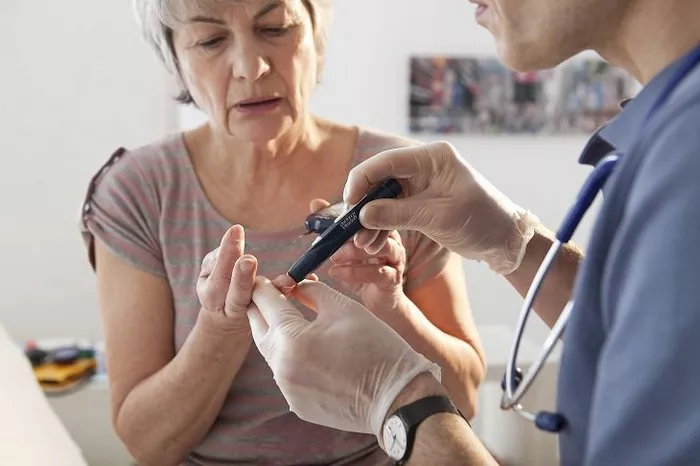Type 2 diabetes is a chronic condition that affects the way your body metabolizes sugar (glucose), an important source of fuel for your body. Unlike type 1 diabetes, where the body does not produce insulin, type 2 diabetes is characterized by insulin resistance, where the body’s cells do not respond properly to insulin. As the condition progresses, the body may also produce less insulin. Recognizing the early symptoms of type 2 diabetes is crucial for timely diagnosis and management, which can prevent serious complications and improve quality of life.
Early Warning Signs and Symptoms
The early symptoms of type 2 diabetes can be subtle and often go unnoticed. However, being aware of these symptoms can lead to early diagnosis and treatment. Here are the primary early symptoms to watch for:
Increased Thirst and Frequent Urination
One of the hallmark symptoms of type 2 diabetes is polydipsia (increased thirst) and polyuria (frequent urination). When blood sugar levels are high, the kidneys try to filter out the excess sugar by increasing urine production. This process leads to dehydration, prompting increased thirst. As a result, you might find yourself drinking more fluids and urinating more often than usual.
Increased Hunger
Another common symptom is polyphagia, or increased hunger. Despite eating more, you may feel constantly hungry. This occurs because your body is not efficiently using the glucose in your bloodstream for energy, signaling your brain that you need more food to compensate.
Fatigue
Persistent fatigue is a common early symptom of type 2 diabetes. When your body can’t effectively use glucose for energy, you may feel unusually tired and lack the energy to perform daily tasks. This fatigue can be both physical and mental, affecting concentration and overall productivity.
Blurred Vision
High blood sugar levels can cause the lenses in your eyes to swell, leading to blurred vision. This symptom can fluctuate with changes in blood sugar levels and is often reversible with proper diabetes management. However, prolonged high blood sugar can lead to more permanent eye damage.
Slow Healing of Wounds and Frequent Infections
Type 2 diabetes can impair the body’s ability to heal wounds and fight infections. High blood sugar levels can damage blood vessels, reducing blood flow and the delivery of essential nutrients to injured areas. As a result, you may notice that cuts, bruises, or sores take longer to heal, and you might be more susceptible to infections.
Dark Patches of Skin (Acanthosis Nigricans)
Acanthosis nigricans is a condition characterized by dark, velvety patches of skin, often found in body folds and creases such as the neck, armpits, and groin. This skin change is a sign of insulin resistance and can be an early indicator of type 2 diabetes.
Unexplained Weight Loss
While increased hunger is a common symptom, some people with type 2 diabetes may experience unexplained weight loss. This occurs because the body is not properly using glucose for energy and starts breaking down fat and muscle tissue for fuel.
Numbness or Tingling in Hands and Feet
High blood sugar levels can damage nerves, leading to a condition called diabetic neuropathy. Early signs include numbness, tingling, or a burning sensation in the hands and feet. If left untreated, this nerve damage can progress and lead to more severe complications.
Persistent Infections
People with type 2 diabetes are more prone to infections, particularly yeast infections. High blood sugar levels create an environment conducive to the growth of fungi and bacteria. Common areas for infections include the skin, urinary tract, and gums.
Mood Changes and Irritability
Fluctuations in blood sugar levels can affect mood and mental health. Some people with type 2 diabetes may experience irritability, mood swings, or feelings of depression. These changes can be linked to the body’s inability to effectively use glucose for energy.
Understanding the Risk Factors
Recognizing the symptoms of type 2 diabetes is essential, but understanding the risk factors can help identify individuals who are more likely to develop the condition. Here are some key risk factors:
Age
The risk of developing type 2 diabetes increases with age, particularly after the age of 45. However, type 2 diabetes is also becoming more common in younger age groups, including children, adolescents, and young adults.
Family History
Having a family history of type 2 diabetes significantly increases your risk. If a parent or sibling has the condition, you are more likely to develop it as well.
Overweight and Obesity
Excess body weight, particularly around the abdomen, is a major risk factor for type 2 diabetes. Fat tissue, especially visceral fat (fat around internal organs), can cause insulin resistance, which can lead to the development of the condition.
Physical Inactivity
A sedentary lifestyle contributes to the development of type 2 diabetes. Regular physical activity helps maintain a healthy weight, improves insulin sensitivity, and lowers blood sugar levels.
Poor Diet
A diet high in processed foods, sugary beverages, and unhealthy fats can increase the risk of type 2 diabetes. Consuming a balanced diet rich in whole grains, fruits, vegetables, lean proteins, and healthy fats can help prevent the condition.
High Blood Pressure and Cholesterol Levels
Hypertension (high blood pressure) and dyslipidemia (abnormal cholesterol levels) are common in people with type 2 diabetes. These conditions are also risk factors for cardiovascular disease, which is closely linked to diabetes.
Gestational Diabetes
Women who develop gestational diabetes during pregnancy have an increased risk of developing type 2 diabetes later in life. Additionally, giving birth to a baby weighing more than 9 pounds (4 kg) can also increase the risk.
Polycystic Ovary Syndrome (PCOS)
PCOS is a condition characterized by hormonal imbalances and insulin resistance. Women with PCOS are at a higher risk of developing type 2 diabetes.
Diagnosis and Screening
If you experience any of the early symptoms of type 2 diabetes or have multiple risk factors, it is important to consult a healthcare professional. Early diagnosis can be achieved through various screening tests, including:
Fasting Blood Sugar Test
This test measures blood sugar levels after an overnight fast. A fasting blood sugar level of 126 mg/dL (7.0 mmol/L) or higher on two separate tests indicates diabetes.
Oral Glucose Tolerance Test (OGTT)
The OGTT measures blood sugar levels before and after consuming a sugary drink. A blood sugar level of 200 mg/dL (11.1 mmol/L) or higher two hours after drinking the solution indicates diabetes.
Hemoglobin A1c Test
The A1c test provides an average blood sugar level over the past two to three months. An A1c level of 6.5% or higher on two separate tests indicates diabetes.
Random Blood Sugar Test
This test measures blood sugar levels at any time, regardless of when you last ate. A random blood sugar level of 200 mg/dL (11.1 mmol/L) or higher, along with symptoms of diabetes, indicates diabetes.
Management and Treatment
Early diagnosis and proper management of type 2 diabetes can significantly reduce the risk of complications and improve quality of life. Here are some key components of diabetes management:
Healthy Eating
Adopting a balanced diet is crucial for managing blood sugar levels. Focus on consuming whole grains, lean proteins, healthy fats, fruits, and vegetables. Avoid processed foods, sugary beverages, and excessive consumption of saturated and trans fats.
Regular Physical Activity
Engaging in regular physical activity helps improve insulin sensitivity and lower blood sugar levels. Aim for at least 150 minutes of moderate-intensity aerobic exercise, such as brisk walking or cycling, per week, along with muscle-strengthening activities on two or more days per week.
Weight Management
Losing excess weight, particularly abdominal fat, can improve insulin sensitivity and help manage blood sugar levels. Even a modest weight loss of 5-10% of body weight can have significant health benefits.
Medication
In some cases, lifestyle changes alone may not be enough to manage type 2 diabetes. Various medications are available to help control blood sugar levels, including:
- Metformin: A first-line medication that reduces glucose production in the liver and improves insulin sensitivity.
- Sulfonylureas: Medications that stimulate the pancreas to produce more insulin.
- DPP-4 Inhibitors: Medications that help increase insulin production and decrease glucose production.
- SGLT2 Inhibitors: Medications that help the kidneys remove excess glucose from the body through urine.
- GLP-1 Receptor Agonists: Medications that help lower blood sugar levels and promote weight loss.
Monitoring Blood Sugar Levels
Regular monitoring of blood sugar levels is essential for managing type 2 diabetes. This can help you understand how different foods, activities, and medications affect your blood sugar levels and make necessary adjustments to your management plan.
Regular Medical Check-ups
Regular check-ups with your healthcare provider are important to monitor your diabetes management and address any complications that may arise. These check-ups typically include blood tests, eye exams, foot exams, and assessments of kidney function.
Preventing Complications
Effective management of type 2 diabetes can prevent or delay complications such as:
- Cardiovascular Disease: Diabetes increases the risk of heart disease and stroke. Managing blood sugar, blood pressure, and cholesterol levels can reduce this risk.
- Kidney Disease: High blood sugar levels can damage the kidneys over time. Regular monitoring of kidney function and blood pressure control are crucial for prevention.
- Neuropathy: Diabetic neuropathy can cause pain, numbness, and weakness in the extremities. Managing blood sugar levels and regular foot care can help prevent neuropathy.
- Retinopathy: High blood sugar levels can damage the blood vessels in the eyes, leading to vision problems. Regular eye exams and blood sugar control are essential for prevention.
- Foot Problems: Poor circulation and nerve damage can lead to foot ulcers and infections. Regular foot care and monitoring are important for preventing complications.
See also: I Have Type 2 Diabetes, What Should My A1c Be?
Conclusion
Recognizing the early symptoms of type 2 diabetes is crucial for timely diagnosis and effective management. Increased thirst, frequent urination, fatigue, blurred vision, and slow-healing wounds are some of the common early signs. Understanding the risk factors, such as age, family history, overweight, and physical inactivity, can help identify individuals at higher risk. Early diagnosis through screening tests and proactive management, including healthy eating, regular physical activity, and medication, can significantly improve quality of life and prevent complications. If you experience any symptoms or have risk factors for type 2 diabetes, consult a healthcare professional for proper evaluation and management.
Related topics:
What Is Metformin HCL Used to Treat?



























